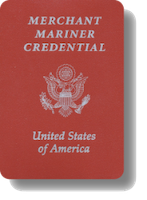 Why Earn a Captain's License?
Why Earn a Captain's License?
- Carry passengers for hire.
- Discount on marine insurance.
- It's required for many full- or part-time maritime jobs.
- Gain knowledge of navigation and rules of the road.
How to Earn a Captain's License
Licenses come in a variety of categories, from the "six-pack" license—which permits you to operate an uninspected commercial vessel that carries a maximum of six passengers—on up to unrestricted tickets for skippers of oceangoing vessels.
If you're just starting out, you'll probably apply for an OUPV license (Operator of an Uninspected Passenger Vessel)—the “six-pack” license. You may qualify for a higher grade of license, allowing you to captain larger vessels, depending on the size of the vessels and where you acquired your sea-time. Licenses also specify the kinds of waters on which you may operate as a paid captain—inland, near-coastal, and various other categories up through all-oceans. The Coast Guard makes the license-grade determination based on the materials you submit in your application.
An executive order was signed March 4, 2019, easing the process for veterans to transition into the Merchant Marine. The order will clear the way for the Merchant Marine to waive licensing fees for sea-service veterans and count their military training toward its credentialing system. Getting credentialed for the Merchant Marine can cost up to $25,000 in fees–a cost from which sea-service veterans would now be exempt.
IMPORTANT: Because the requirements, procedures, and forms may change from time to time, it’s important to check the Coast Guard National Maritime Center (NMC) website for the official details when you prepare your application. Note: the Coast Guard’s term for a captain’s license is Merchant Mariner Credential (MMC).
Here is the NMC application acceptance checklist (what you need to do), but please read the summary below for an overview.
Summary of the licensing process:
1. Accumulate a minimum of 360 days of service as a crewmember aboard one or more vessels while they are underway. A “day” is four or more hours underway on the water (but you can’t count a 12-hour trip as three days, nor can you count time aboard as a passenger). Ninety of your total number of days must have been logged in the three years prior to your application. Document this service on the Small Vessel Sea Service form (CG-719-S). You'll need the signature of each vessel's owner to document your service as crew. If you’re using days underway on your own vessel, you can self-document, but you must have accurate records.
2. Study for and pass the U.S. Coast Guard written test for the license grade you’re applying for. You may also take additional exams to upgrade your license to a master's level or qualify for endorsements, such as towing or operator of auxiliary sail. To prepare for the exam:
A. Study commercially-available study guides on your own, and then make an appointment to take the exam at a Coast Guard Regional Exam Center. There are five exam centers between Miami and Boston. One commercial website with practice questions from the USCG licensing exam is: https://natsea.com/questions
-OR-
B. Take a privately-conducted course, approved by the U.S. Coast Guard, online or in a classroom. It’s important to find a Coast Guard-approved course. You then take the Coast Guard test, administered by a designated proctor supplied by the course provider.
3. Get a physical examination. It must be performed within the 12 months preceding your application, and the medical practitioner must file the report using NMC form CG-719K. It’s especially important that the practitioner does it correctly and completely. Details are spelled out on the application forms. Besides the usual physical examination, the exam will include a vision test and a hearing test. The Medical Certificate page has more details.
Search “merchant mariner physical exam locations” on your web browser for lists of offices that do DOT physical exams (includes USCG and aviation physicals). They know the CG forms and they can do your drug test when you appear for the physical, if you’re not enrolled in a drug-testing program.
4. Take a drug-screening test. The test report must be dated within six months (185 days) of your application. If you have your physical exam at an office that does DOT physicals, you can have your drug test done at the exam (see #3 above). If you are enrolled in a drug-testing program, you can get a report from the company.
5. Take a USCG-approved adult first aid and a CPR course. The first aid course must have been taken within the 12 months preceding your application, and the CPR certification must be current and valid when you apply.
6. Transportation Worker Identification Credential (TWIC), issued by the Transportation Safety Agency (TSA). If you don’t have this credential, you’ll have to get one or provide evidence that you have held a valid TWIC.
7. Complete any other requirements spelled out on the National Maritime Center website.
8. Submit your application packet to your local Coast Guard Regional Exam Center. Follow the instructions carefully and pay attention to the dates and the details.
The Coast Guard will determine the category of license that you'll be issued, based on the size of the vessel(s) on which you did your sea-service and on the waters on which you worked (lakes, rivers, bays, oceans).
Please let us know if we can help with answers to your questions. E-mail


